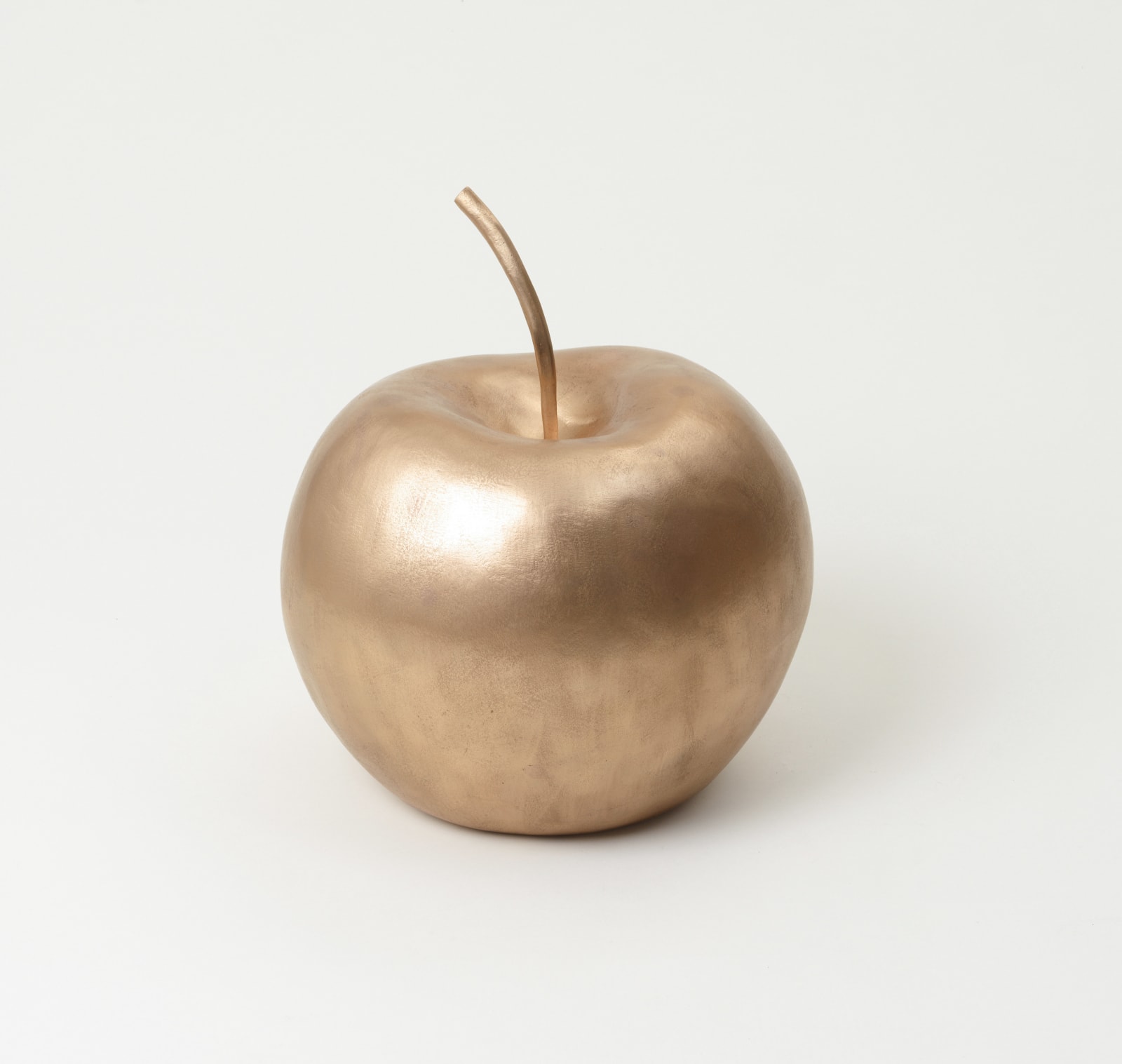
Claude Lalanne French, 1925-2019
Pomme (Moyenne), 2006
Bronze
57 x 52 x 48 cm. (22 1/2 x 20 1/2 x 18 7/8 in.)
Edition of 8 + 4 AP (#1/8 B)
Copyright The Artist
Further images
Claude Lalanne’s Pomme (Moyenne) (2006) exemplifies the artist’s ability to transform a familiar natural form into an object of poetic strangeness. Executed in bronze with a refined, almost liquid surface,...
Claude Lalanne’s Pomme (Moyenne) (2006) exemplifies the artist’s ability to transform a familiar natural form into an object of poetic strangeness. Executed in bronze with a refined, almost liquid surface, the work distils the apple into a symbol that oscillates between the real and the fantastical. The orchard landscape surrounding Lalanne’s home at Ury, on the outskirts of Paris, provided a continual source of inspiration, and the apple recurs across her oeuvre in guises ranging from jewellery and timepieces to monumental sculptural statements.
This motif, ancient and inexhaustible, carries a wealth of cultural associations. Lalanne’s apple evokes both Eris’s fateful gift in Greek mythology and the forbidden fruit of Eden, recalling narratives of temptation, beauty, discord, and knowledge. Such layered references underscore the dual nature of the form – at once alluring and unsettling. The swelling contours of Pomme (Moyenne) recall the pared-down organic forms of Constantin Brâncuși, whose friendship with Claude and François-Xavier Lalanne during their early years in Paris left a lasting impression on her visual language.
Situated within a broader European tradition, the apple resonates with Cézanne’s still-life investigations, Magritte’s enigmatic compositions, and Picasso’s experiments with abstraction and volume. Yet Lalanne reimagines the fruit in three dimensions with a Surrealist sensibility, bridging the gap between sculpture, nature, and dream.
Equally suited to interior display or outdoor installation, Lalanne’s Pomme achieves a versatility rare in contemporary sculpture. Larger iterations have appeared in locations ranging from Park Avenue in New York to the Gardens of Versailles and the Domaine du Muy, underscoring their capacity to reframe both urban and pastoral settings with a sense of wonder.
This motif, ancient and inexhaustible, carries a wealth of cultural associations. Lalanne’s apple evokes both Eris’s fateful gift in Greek mythology and the forbidden fruit of Eden, recalling narratives of temptation, beauty, discord, and knowledge. Such layered references underscore the dual nature of the form – at once alluring and unsettling. The swelling contours of Pomme (Moyenne) recall the pared-down organic forms of Constantin Brâncuși, whose friendship with Claude and François-Xavier Lalanne during their early years in Paris left a lasting impression on her visual language.
Situated within a broader European tradition, the apple resonates with Cézanne’s still-life investigations, Magritte’s enigmatic compositions, and Picasso’s experiments with abstraction and volume. Yet Lalanne reimagines the fruit in three dimensions with a Surrealist sensibility, bridging the gap between sculpture, nature, and dream.
Equally suited to interior display or outdoor installation, Lalanne’s Pomme achieves a versatility rare in contemporary sculpture. Larger iterations have appeared in locations ranging from Park Avenue in New York to the Gardens of Versailles and the Domaine du Muy, underscoring their capacity to reframe both urban and pastoral settings with a sense of wonder.
